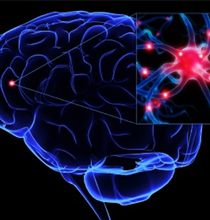byte
Brain Patterns in Children May Provide Autism Clues
Neuroscientist Roberto Fernandez Galán, PhD, led an interdisciplinary team that recently found uniform brain activity in children at rest is a strong indicator of autism. The work was published in the journal PLOS ONE.
Galán, an assistant professor at Case Western Reserve University School of Medicine, collaborated with University of Toronto researchers on a project that mapped spontaneous brain activity in 19 children with a technique known as magnetoencephalography.
Galán analyzed the activity and determined how different brain areas interact with each other.
“If you plot the spatial patterns, the brain activity in the control group is much less homogeneous,” Galán explains. “We were able to discriminate between the controls and those with autism spectrum disorder with an accuracy of 94 percent—which we think would make this a better biomarker than any currently in use or proposed.”
The group also discerned that, among the nine children with autism spectrum disorder, the flow of activity was predominantly from the rear to the front of the brain. Directional flow distinguished autism with 84 percent accuracy.
Galán next wants to test the methods on a larger and more diverse group of patients to determine if the patterns are widespread and could be used to confirm a clinical diagnosis of the disorder.
